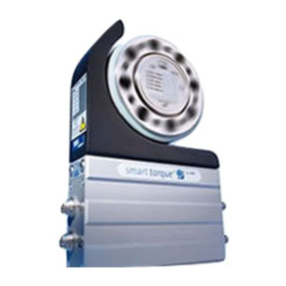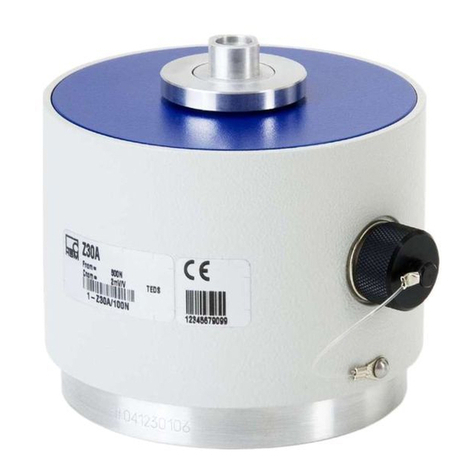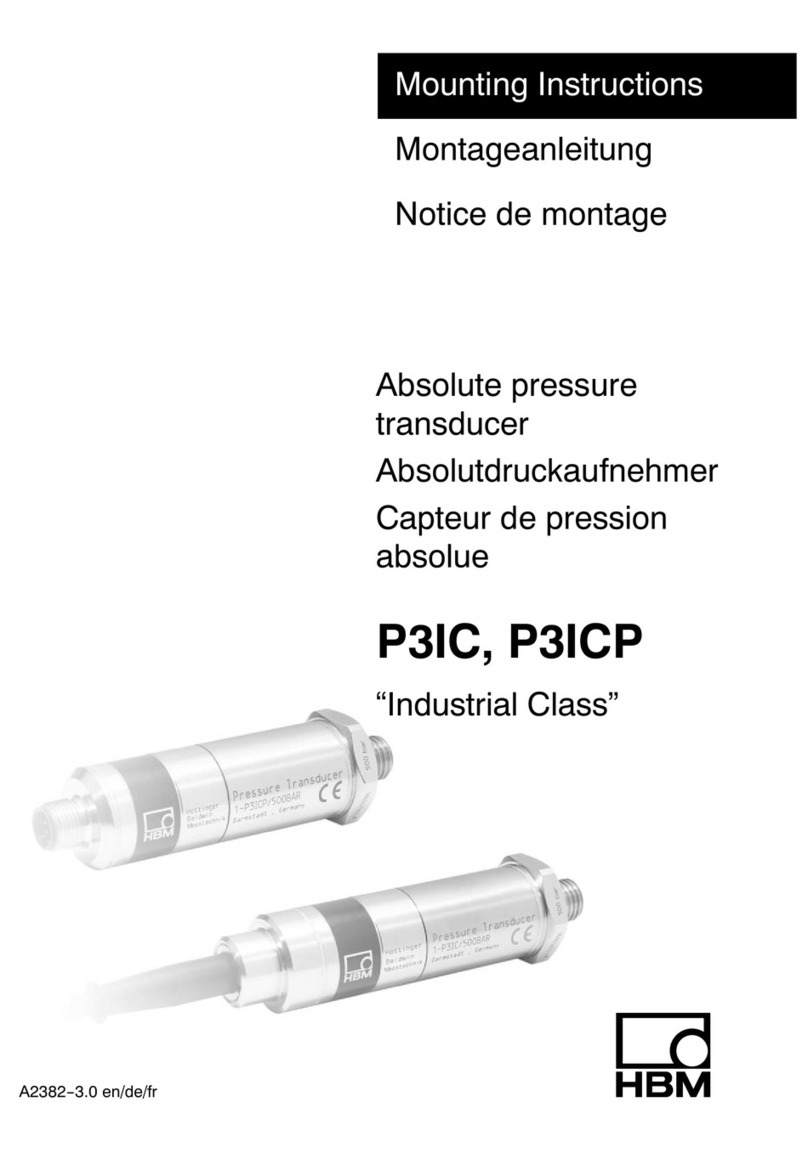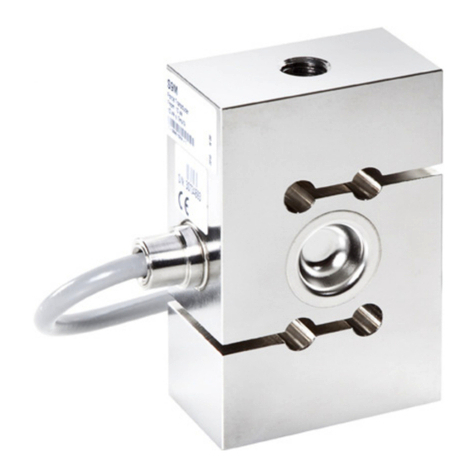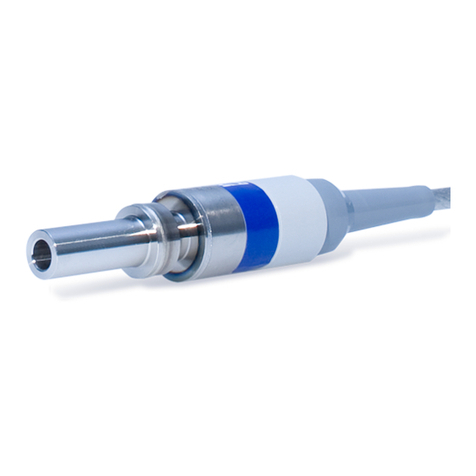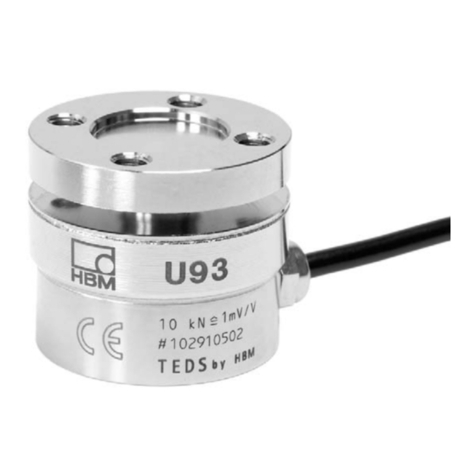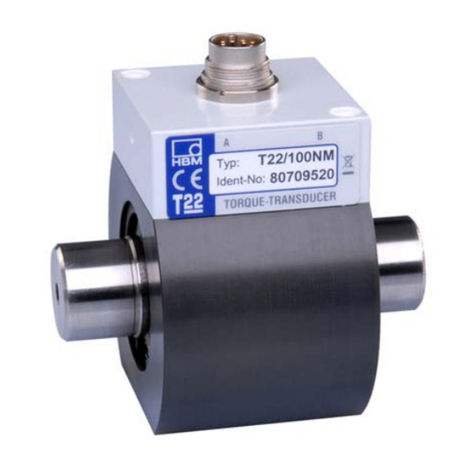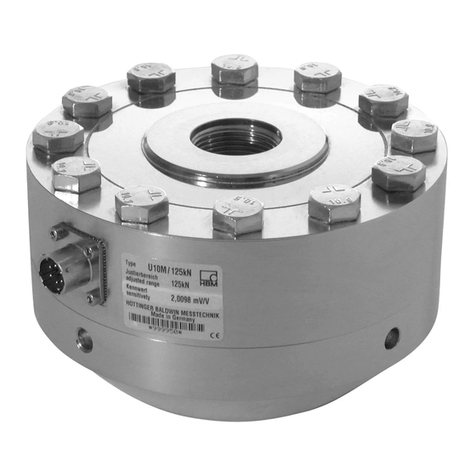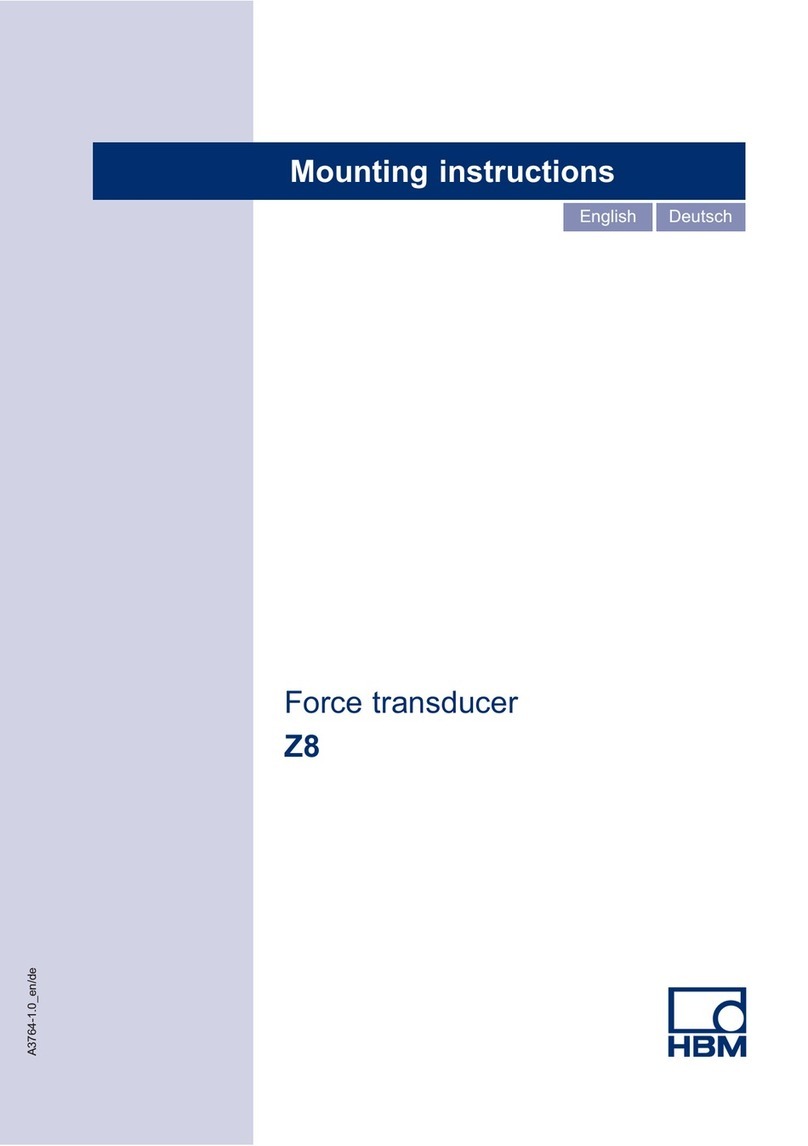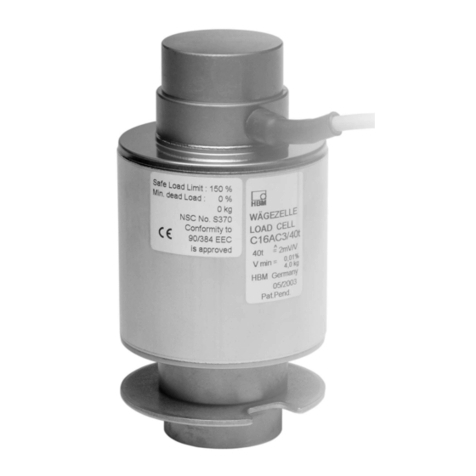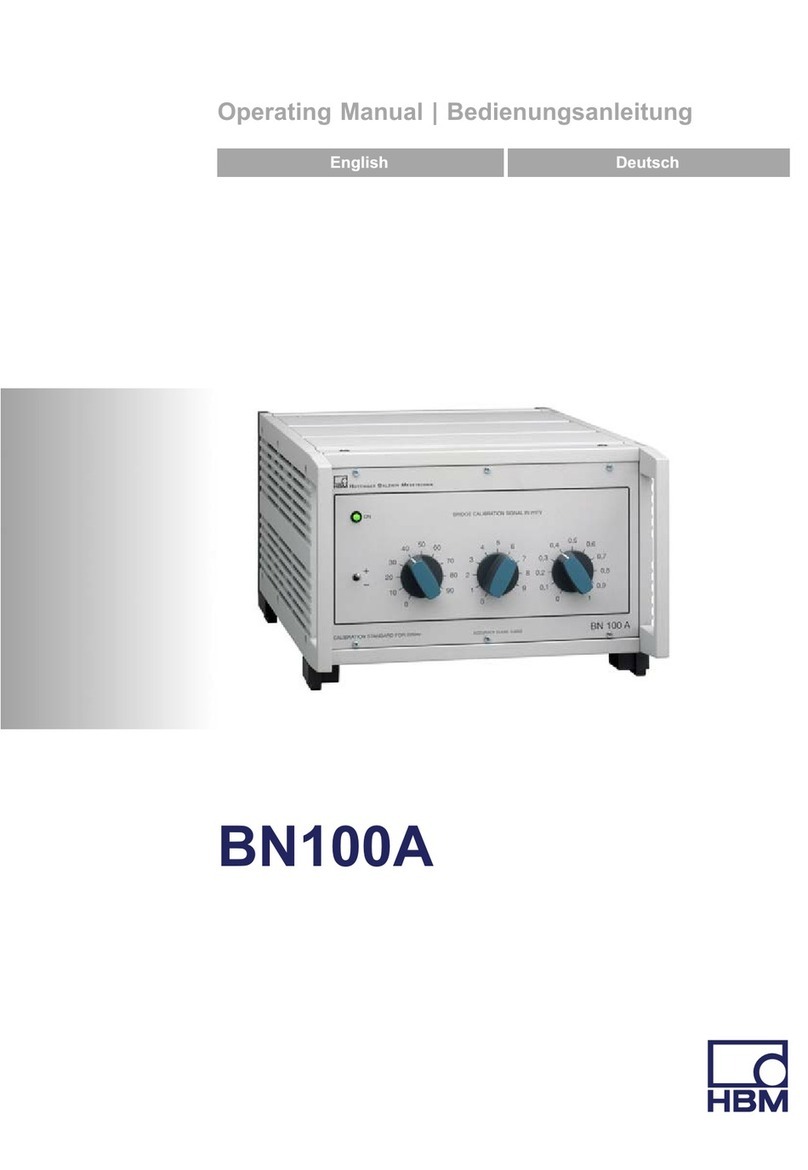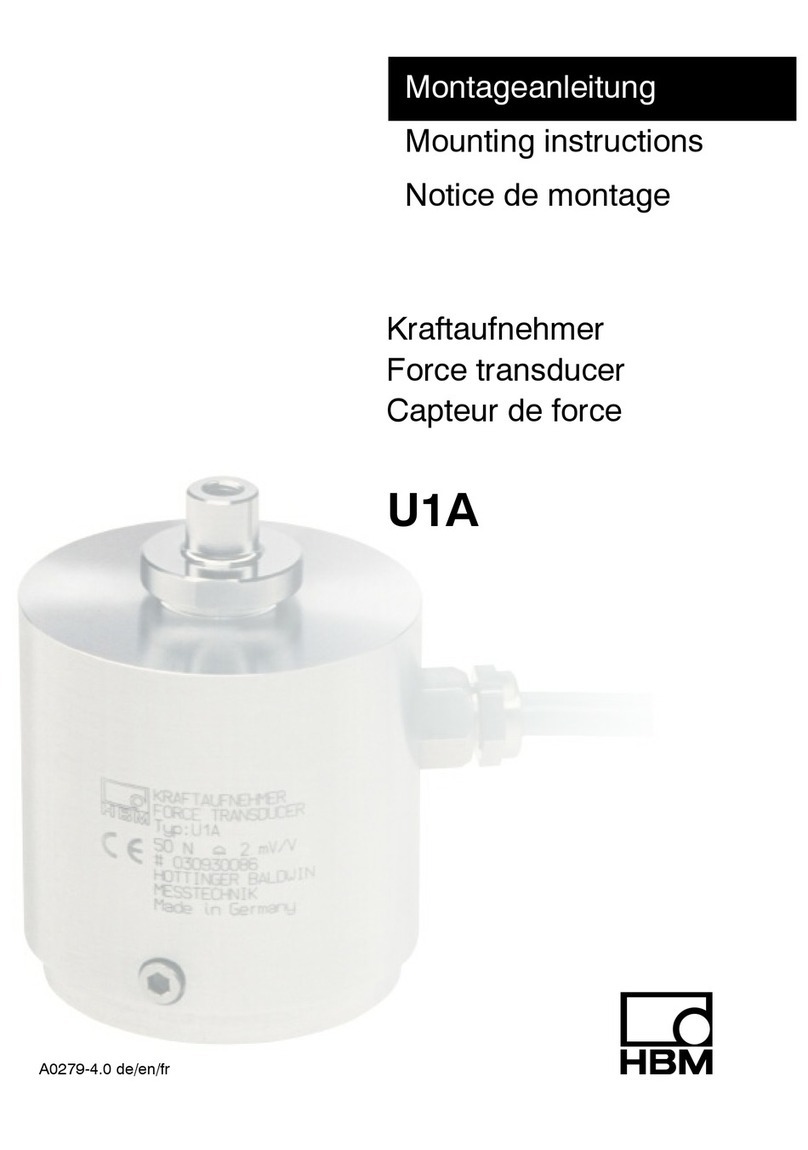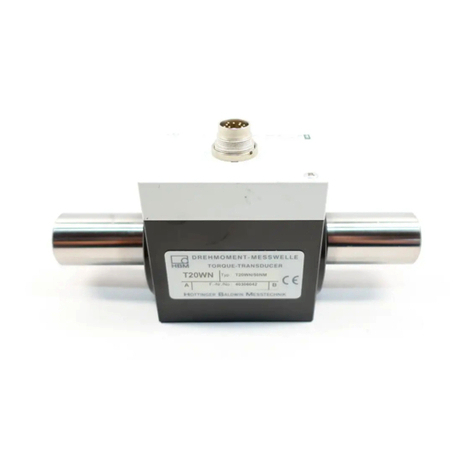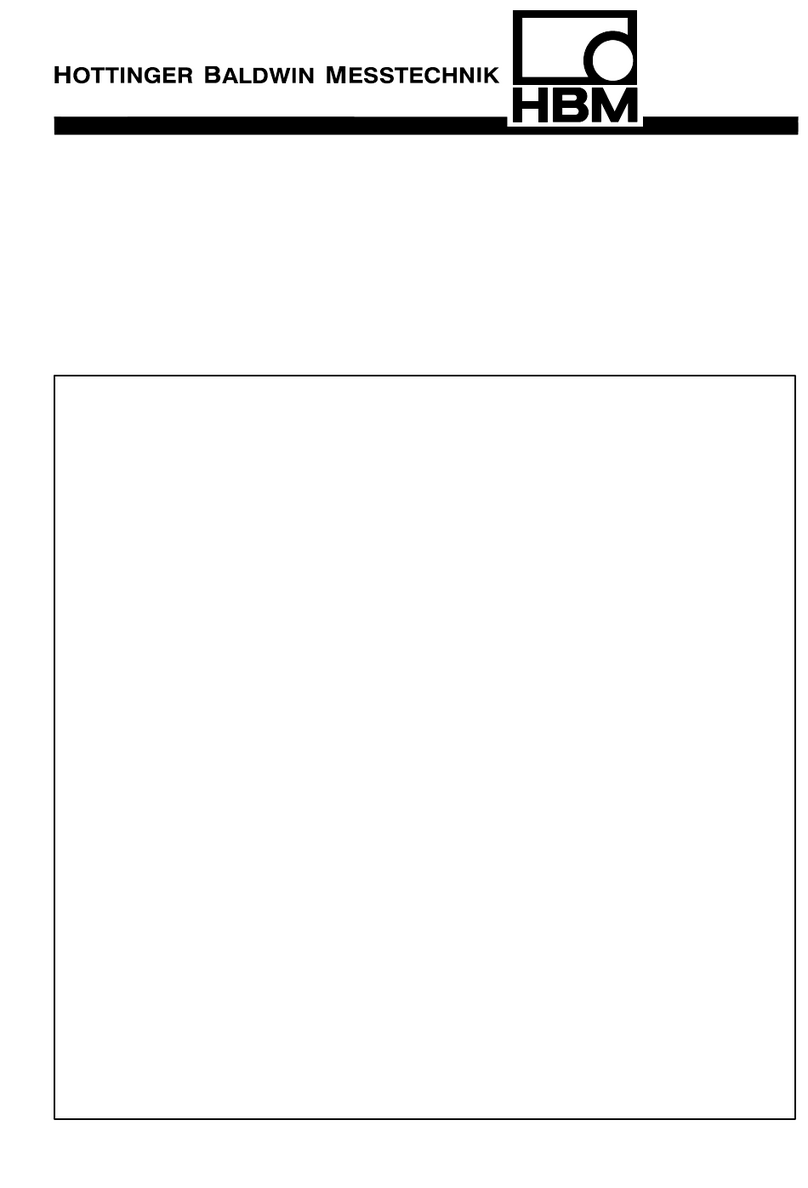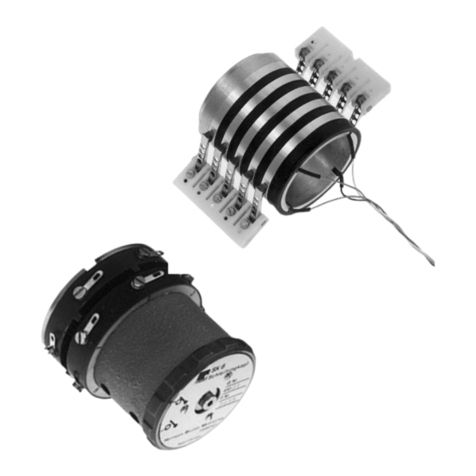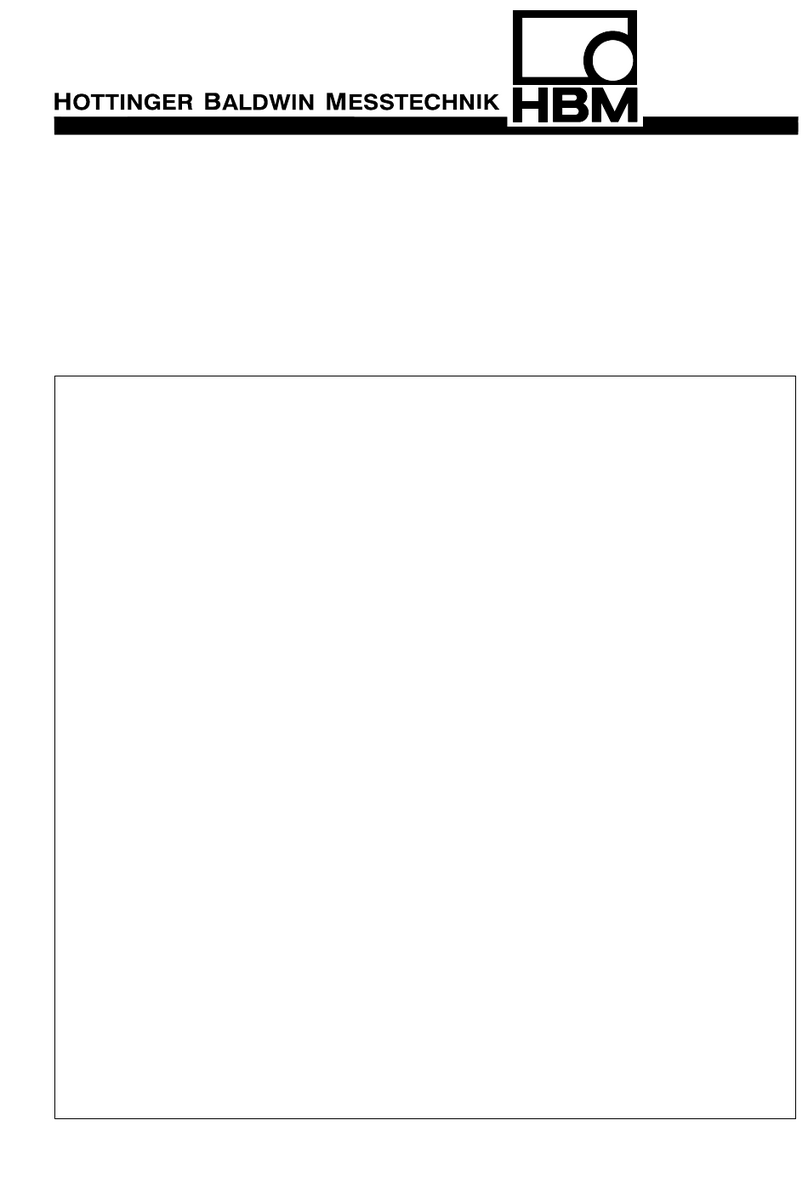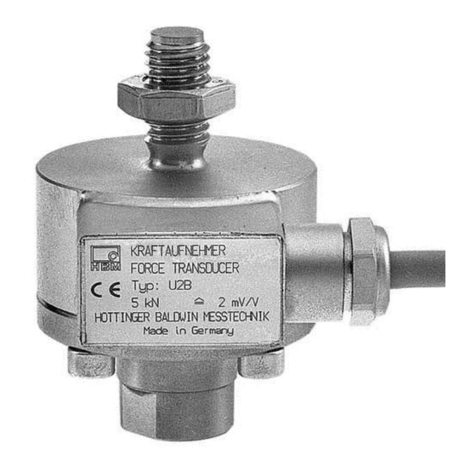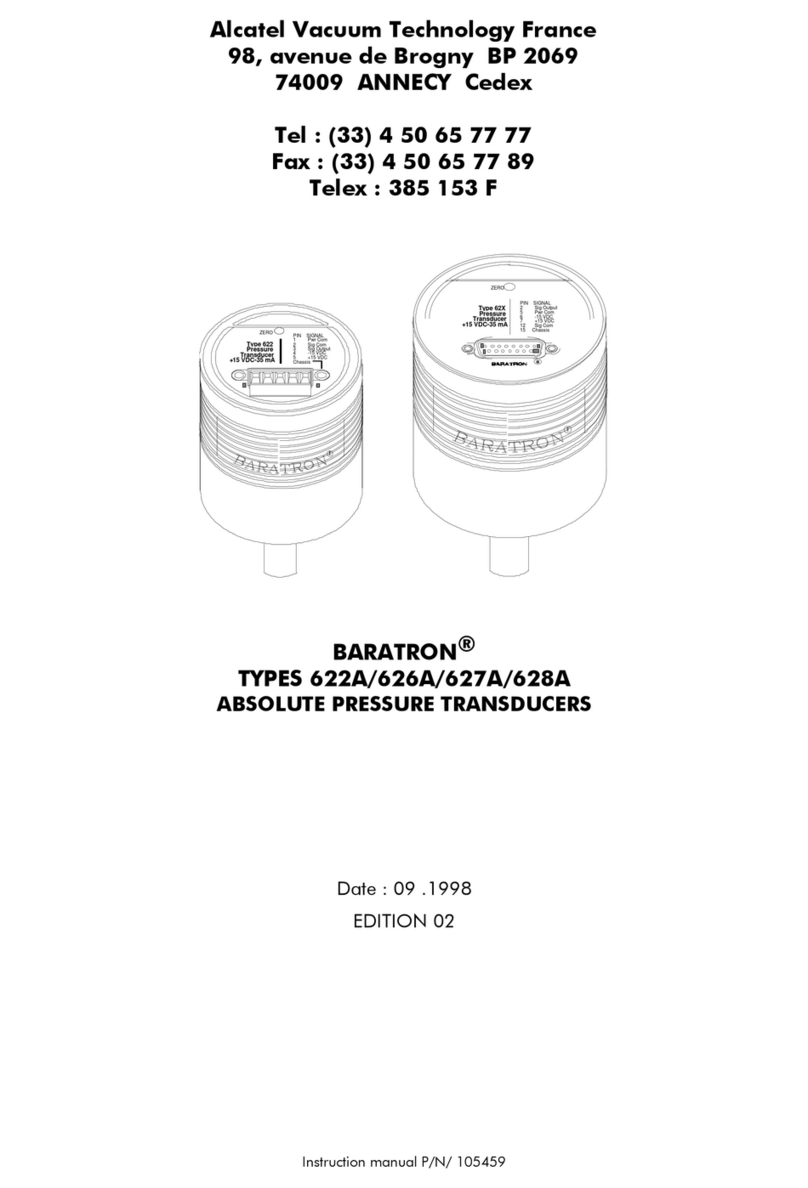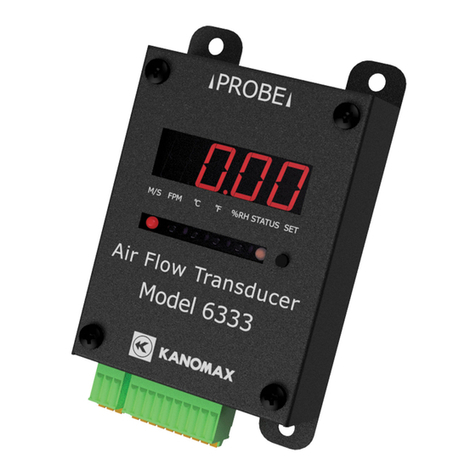
U15
4
A2100-4.0 en/deHBM
Safety instructions
Intended use
The U15 force transducer is to be used exclusively for force measurement
tasks and directly related control tasks. Use for any additional purpose shall
be deemed to be not as intended.
In the interests of safety, the transducer should only be operated as described
in the Mounting Instructions. It is also essential to comply with the legal and
safety requirements for the application concerned during use. The same
applies to the use of accessories.
The transducer is not a safety element within the meaning of its use as in
tended. For safe and trouble‐free operation, this transducer must not only be
correctly transported, stored, sited and installed but must also be carefully op
erated and maintained.
General dangers of failing to follow the safety instructions
U15 force transducers are state‐of‐the‐art and failsafe.
Transducers can give rise to remaining dangers if they are inappropriately
installed and operated by untrained personnel.
Everyone involved with the installation, commissioning, maintenance or repair
of a force transducer must have read and understood the Mounting Instruc
tions and in particular the technical safety instructions.
Remaining dangers
The scope of supply and performance of the transducer covers only a small
area of force measurement technology. In addition, equipment planners, in
stallers and operators should plan, implement and respond to the safety engi
neering considerations of force measurement technology in such a way as to
minimize remaining dangers. Prevailing regulations must be complied with at
all times. There must be reference to the remaining dangers associated with
force measurement technology.






